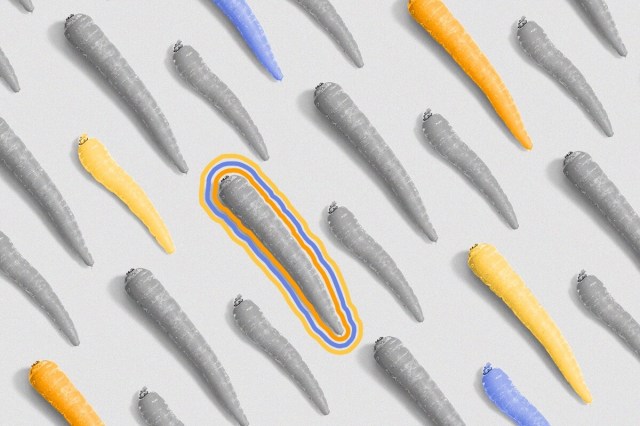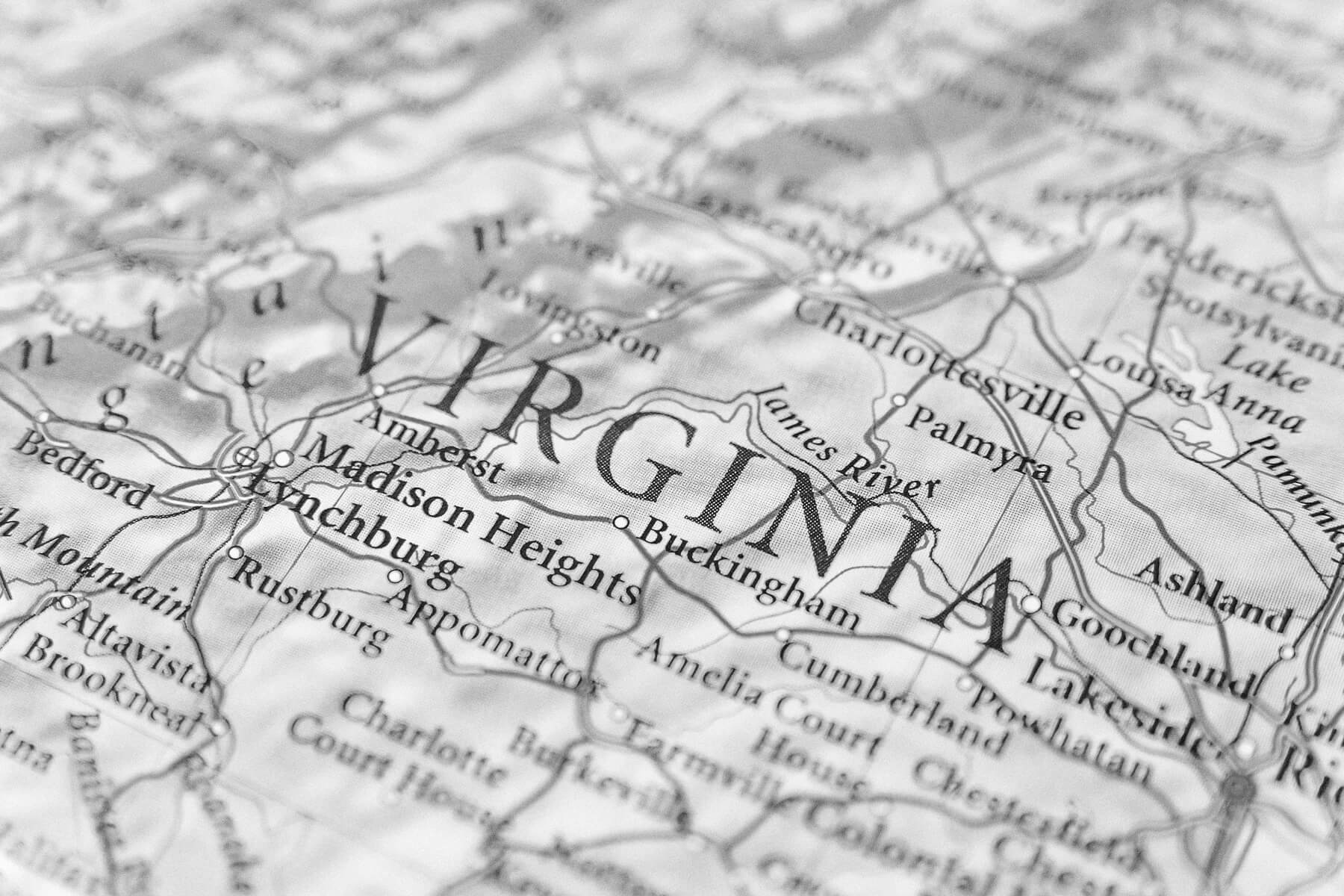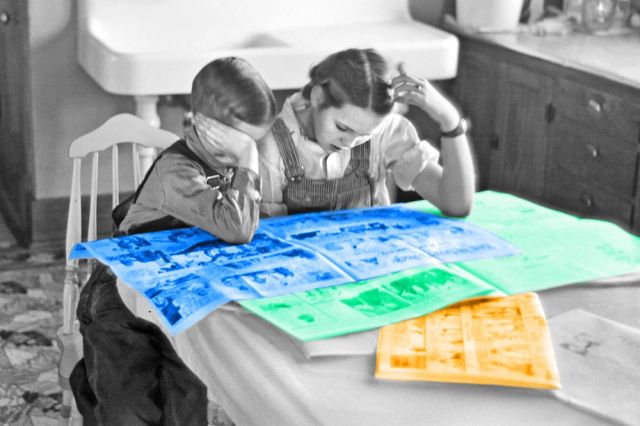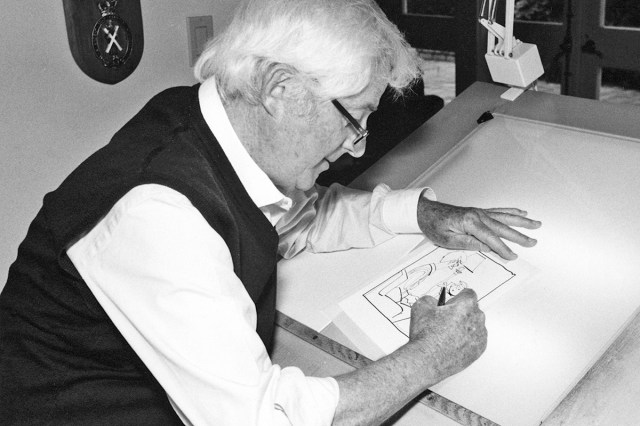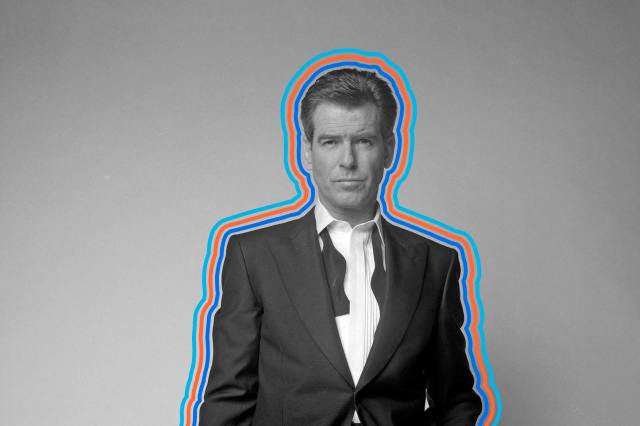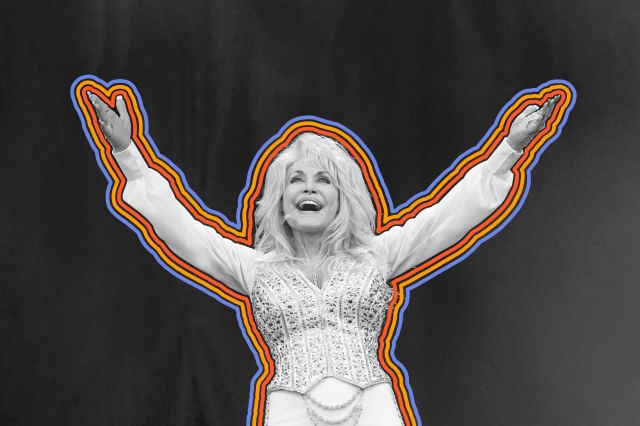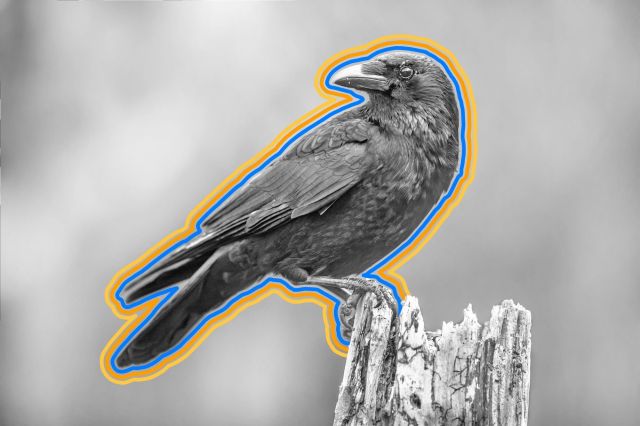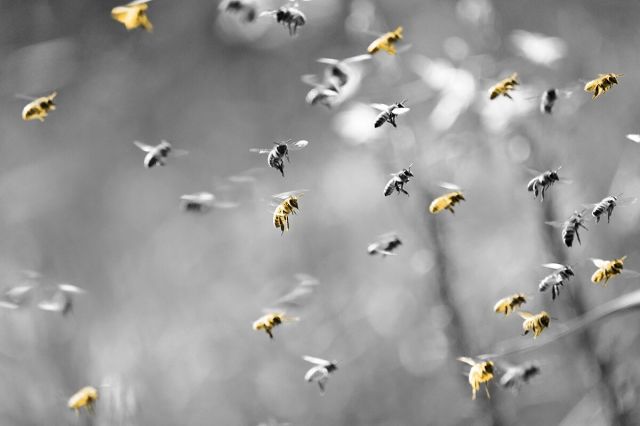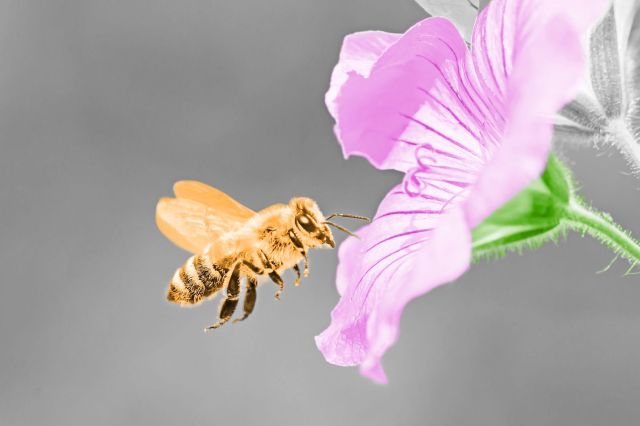Our Top 50 Most Interesting Interesting Facts
Time flies when you’re having fun, and we’ve been having a lot of fun at Interesting Facts. Many facts that are amazing, mind-boggling, awe-inspiring, and just plain interesting have arrived in your inbox — and we’ve collected the 50 most popular from around the site so that you can revisit crowd favorites. From rats giggling when they’re tickled to each human having a unique tongue print, here are some of the most interesting facts we’ve ever run.

Bananas Are Technically Berries
Berry classification is a confusing business. People began referring to some fruits as “berries” thousands of years before scientists established their own definitions, some of which are still debated. Today, little effort is made to teach the public about what botanically constitutes a berry, so here’s a bit of help. It’s generally accepted that all berries meet three standards. First, they have a trio of distinct fleshy layers (the outer exocarp, middle mesocarp, and innermost endocarp); second, their endocarps house multiple seeds; third, berries are simple fruits, meaning they develop from flowers with a single ovary.
Blueberries and cranberries are true berries, as their names imply. Other berries may surprise you: Avocados, eggplants, grapes, guava, kiwis, papayas, peppers, pomegranates, and tomatoes are all, botanically speaking, berries. Bananas are berries, too, since they meet all three requirements. The exocarp of a banana is its peel, while the mesocarp is the creamy middle surrounding the seedy, also-edible endocarp.

Jackson, Mississippi’s State Capital, Lies Atop a Dormant Volcano
At first glance, Jackson, Mississippi, is like any other state capital, with its domed capitol building standing squarely in the heart of the city. However, 2,900 feet below the surface lies a surprising secret — an ancient volcano. Although the West Coast and Hawaii are the U.S.’s biggest volcanic hot spots, active volcanoes also dotted the northern Gulf of Mexico region millions of years ago.
One of these volcanoes was the Jackson Volcano, and the city’s Mississippi Coliseum now sits above its ancient crater. Thankfully for the city’s residents, the volcano is extinct and hasn’t erupted since around the age of the dinosaurs. And while Jackson is the only capital city set atop a volcano, volcanic formations can also be seen within the limits of other U.S. cities, including Portland, Oregon, and Honolulu, Hawaii.
Arizona and Hawaii Don’t Observe Daylight Saving Time
If you’re one of the 61% of Americans who’d like to stop resetting the clock twice a year, it might be time to move to Arizona or Hawaii. Except for the Navajo Nation in Arizona, the Grand Canyon and Aloha states don’t observe daylight saving time, meaning they won’t be falling back in November or springing forward next March. Rather, they live in what must be a permanent state of bliss, never having to remember whether the latest clock change means they’re getting an hour less of sleep the next night or an hour more.
Though polls like the one cited above consistently show that Americans are tired of changing their clocks, making daylight saving time permanent is just as popular as ignoring it altogether — one poll showed 59% of respondents were in favor of the idea. The Senate unanimously passed a bill to do just that in March 2022, though the Sunshine Protection Act, as it’s called, has yet to move forward in the House.

Tenth President John Tyler Still Has a Living Grandson
More than 200 years after the 10th President of the United States was born, one of his grandsons is still alive. As impossible as that may seem, the math — and biology — checks out. John Tyler, who was born in 1790 and became President in 1841 after William Henry Harrison died in office (possibly of pneumonia), had a son named Lyon Gardiner Tyler in 1853. This son was born to the then-60-something Tyler and his second, much younger, wife, Julia Gardiner. Lyon then had two sons of his own in his 70s (also with a much younger second wife), one of whom — Harrison Ruffin Tyler, born in 1928 — is still gracing the Earth in his early nineties. It may make this feat slightly less surprising to know that Tyler had 15 children, more than any other POTUS in U.S. history.
Male Squirrels Get Smarter in the Fall
Autumn heralds the arrival of many things: pumpkin pie, crisp morning air, and, apparently, more intelligent rodents. Male squirrels get smarter in the fall due to their hippocampus (a part of the brain involved in memory) increasing in size during the caching season — the time of year when they gather even more nuts than usual. Interestingly, female squirrel brains don’t show the same effect; researchers speculate that male squirrel brains may change in the fall to act more like the females’ brains already function all year long. The slightly bigger brains may help male squirrels remember exactly where they’ve stored their nuts, although scientists are still teasing out how.

Everyone Has a Unique Tongue Print
When detectives investigate a crime scene in any prime-time cop drama, they’re often on the hunt for one thing: fingerprints. Because these intricate patterns of whorls and lines are exclusive to each individual, fingerprints have been a go-to method for tracking down suspects for more than a century. However, our fingerprints are not unique when it comes to being, well, unique. Our tongues, like our fingerprints, are also specific to each individual. That’s right — people have tongue prints, which vary from one person to another due to both shape and texture. And perhaps surprisingly, the organ has been gaining some popularity as a method for biometric authentication.
While fingerprints can be altered, eyes affected by astigmatisms or cataracts, and voices changed just by the all-too-common cold, the human tongue is relatively protected from external factors. Sticking out one’s tongue for a print also involves a layer of conscious control and consent that goes beyond what’s required for retinal scans or even fingerprinting, which could make it a more appealing biometric tool for some.
All Blue-Eyed People Likely Descended From a Single Ancestor
Eyes are said to be the windows to the soul, but they’re also a glimpse at humanity’s genetic past. Scientists estimate that between 6,000 and 10,000 years ago, the eye color of all Homo sapiens was brown — likely an evolutionary advantage, as the melanin pigment offers some protection from UV radiation. But then, something changed. Sometime during the Neolithic expansion in Europe, an individual was born with a mutation to the OCA2 gene. This gene code controls melanin production in the iris, and the mutation caused this person’s eyes to turn blue rather than the usual brown. Because blue eyes can only form as a result of this mutation, scientists theorize that all blue-eyed people — about 10% of the world population — are a relative of this original lone blue-eyed ancestor.

Mummies Can Still Have Fingerprints
Fingerprints are one of the few parts of the human body that generally never change — in some cases, even after thousands of years. Scientists who study ancient civilizations by way of mummified remains can attest: Mummies have fingerprints. But how?
Mummification works by drying out soft tissue such as skin, halting decomposition and preserving the body, fingerprints included. Recovering the fingertip impressions isn’t easy, but it is possible; the job requires soaking or injecting mummified hands with hydrating solutions that plump the tips. From there, the fingertips are inked and copied in a fashion similar to how modern fingerprints are recorded.
Ketchup Was Originally Made Out of Fish
The ketchup we slather onto hot dogs, burgers, and fries today once had a different purpose: Doctors believed it was best consumed as a health tonic. Ketchup has come a long way from its roots in China as far back as the third century BCE, when cooks fermented seafood to create a salty, amber-colored sauce that resembles modern fish sauce (an anchovy-based condiment that adds umami flavor to many Asian dishes). By around the 16th century, British sailors had taken word of ketchup back to their home country, and British cooks tried to replicate it with their own versions made from walnuts and mushrooms. It’s not clear exactly when tomatoes came on the scene, though the first known tomato ketchup recipe appeared around 1812, published by Philadelphia horticulturist James Mease.

Rats Giggle When Tickled
It is sometimes said that there are two types of tickling: knismesis and gargalesis. The former is the “light, feather-like” kind, which doesn’t induce laughter, while the latter is more high-pressure and does cause laughter. And while you may think of humans as the only creatures susceptible to gargalesis, one of our much smaller counterparts is as well: the humble rat. Rats actually love being tickled, especially on their back and belly, and there’s even a specific term for the frolicking they do in between tickles: freudensprünge, or “joy jumps.” Sadly, rat giggles are too high for us to hear without special microphones that can reproduce the sound in a lower register. (That doesn’t make videos of rats being tickled any less adorable, however.)
Alfred Hitchcock’s “The Birds” Was Partly Based on a True Story
With apologies to anyone who already found The Birds terrifying while under the impression that it was wholly fictional: Alfred Hitchcock’s avian thriller was partly based on a true story. Said event took place on California’s Monterey Bay in August 1961, when “thousands of crazed seabirds” called sooty shearwaters were seen regurgitating anchovies and flying into objects before dying on the streets. The Master of Suspense happened to live in the area, and called the Santa Cruz Sentinel — which had reported on the strange goings-on in its August 18 edition — for more information. Long after his movie was released two years later, the bizarre event remained shrouded in mystery: What would inspire birds to act this way, and were they as malicious as they seemed in Hitchcock’s movie?
The truth ended up being both straightforward and a little sad. The scientific consensus is now that the birds were poisoned by toxic algae found in a type of plankton called Pseudo-nitzschia. The birds weren’t attacking anyone; they were disoriented and barely in control of their actions. That explanation is absent from Hitchcock’s thriller, which also drew inspiration from Daphne du Maurier’s short story of the same name. (Hitchcock’s Rebecca was a du Maurier adaptation, too.) A resounding success, The Birds is widely considered one of Hitchcock’s greatest works, alongside Psycho, Vertigo, Rear Window, and North by Northwest.

U.S. Elections Used To Be Held Over a 34-Day Window
As implied by its name, Election Day is, well, a single day. That wasn’t always the case, however: States used to hold elections whenever they wanted within a 34-day period leading up to the first Wednesday in December. This ultimately created some issues, as you might imagine — early voting results ended up holding too much sway over late-deciding voters, for one thing. The current date was implemented by the Presidential Election Day Act of 1845, and federal elections now occur every two years on the first Tuesday after the first Monday in November.
That may sound arbitrary at first, but the date was chosen quite deliberately. American society was much more agrarian in the mid-19th century than it is today, and it took a full day of traveling for many to reach their polling place. Church made weekends impractical, and Wednesday was market day for farmers, so Tuesday proved ideal. November, meanwhile, worked because weather was still fairly mild, and the harvest was complete by then.
Smokey Bear Has His Own ZIP Code
In 1944, working on a commission from the War Advertising Council and the U.S. Forest Service, Saturday Evening Post artist Albert Staehle and writer Harold Rosenberg crafted the reassuring, safety-conscious Smokey Bear, now the face of the country’s longest-running public service campaign, where he frequently shares his famous slogan: “Only you can prevent wildfires.” In 1950, a 5-pound black bear cub rescued from a New Mexico wildfire by Taos Pueblo firefighters was christened “Smokey Bear” as a living homage to the popular protective figure.
This bear spent the rest of his life at the National Zoo in Washington, D.C. There, he, his successor — Smokey II — and their alter ego received up to 13,000 letters, drawings, Christmas cards, and honey shipments each week. To help sort these deliveries, the bears were given their own Washington, D.C., ZIP code: 20252. From around 2007 to 2014, the ZIP code was decommissioned, but it was revived for the mascot’s 70th anniversary. The original bear also has his own Instagram and Twitter accounts, where he shares fire prevention tips with the hashtag #OnlyYou — now a more vital message than ever.

The International Space Station Is the Most Expensive Item Humans Have Ever Created
The most expensive movie ever made is Pirates of the Caribbean: On Stranger Tides, which cost a whopping $410 million. That’s a pretty penny to be sure, but it’s less than half a percent of the most expensive human-made object in history: the International Space Station, whose price tag comes in at $100 billion. Launched in 1998 after more than a decade of careful (and often difficult) planning, the ISS is a collaboration between five space agencies: NASA (United States), Roscosmos (Russia), JAXA (Japan), ESA (Europe), and CSA (Canada). It has been continuously occupied since 2000, with a full-time international crew conducting microgravity experiments and other research.
Portland, Oregon, Was Named in a Coin Toss
What’s the most you’ve ever lost in a coin toss? For Asa Lovejoy, it was the opportunity in 1845 to name the city he’d recently established with Francis Pettygrove. The two decided to settle their disagreement as to what their new land claim should be called with a two-out-of-three coin flip that Pettygrove won. Pettygrove chose “Portland” because he hailed from the city of the same name in Maine; Lovejoy had intended to name the place after his hometown of Boston.
Now known as the Portland Penny, the one-cent piece used in the fateful toss was minted in 1835 and retrieved by Pettygrove after his victory. It remained with him when he founded Port Townsend, Washington, and was eventually given to the Oregon Historical Society, which now keeps it on display.

People Breathe Primarily Out of One Nostril at a Time
The human nose is a biological wonder. It can smell up to 1 trillion odors, trap harmful debris in the air before it enters your lungs, and affect your sex life. But arguably its most important job is to condition the air you breathe before that air enters your respiratory tract. This means warming and humidifying the air before it passes to your throat and beyond.
To do this, the nose undergoes a nasal cycle in which one nostril sucks in the majority of the air while the other nostril takes in the remaining portion. A few hours later (on average), the nostrils switch roles. This cycle is regulated by the body’s autonomic nervous system, which swells or deflates erectile tissue found in the nose. Although we don’t notice this switch throughout the day, if you cover your nostrils with your thumb one at a time, you’ll likely observe that air flow through one is significantly higher than the other. This is also why one nostril tends to be more congested than the other when you have a cold (the nondominant one gets more filled with mucus).
By Some Accounts, North Dakota Didn’t Technically Become a State Until 2012
North Dakota was admitted to the Union as the 39th state on November 2, 1889, except it kind of sort of wasn’t. Its constitution left out a key detail that, according to some, was enough of a technicality that North Dakota didn’t actually become a state until 2012. A local historian by the name of John Rolczynski first noticed in 1995 that North Dakota’s state constitution failed to mention the executive branch in its section concerning the oath of office, which he felt made it invalid; the United States Constitution requires that officers of all three branches of a state’s government be bound by said oath, and North Dakota’s only mentioned the legislative and judiciary branches.
This led to a campaign that included an unanswered letter to then-President Bill Clinton and ended with the successful passage of an amendment to Section 4 of Article XI of the state constitution, which fixed the omission. “It’s been a long fight to try to get this corrected and I’m glad to see that it has,” Rolczynski said at the time. North Dakota had enjoyed all the benefits and responsibilities of statehood for well over a century by that point, of course, but you can never be too thorough.

Queen Elizabeth Had a Longtime Body Double
Leaders have historically used body doubles to thwart would-be assassins, but Queen Elizabeth II’s double served a different — and significantly less bloody — purpose. A big part of being the queen of the United Kingdom was simply showing up. Whether opening a hospital or hosting a foreign dignitary, the queen was always busy. A majority of her events required rehearsals, and that’s where Ella Slack came in.
Slack got the job while working for the BBC’s events department in the 1980s. Although she doesn’t look like her majesty, Slack is about the same height and build, so if an event needed to test camera angles or see if the sun would be in the queen’s eyes, Slack was the person for the task. She stood in for the queen more than 50 times, including riding in the royal carriage and attending rehearsals for the opening of Parliament.
A Misheard Song Lyric Is Called a “Mondegreen”
If you’ve confused “Takin’ Care of Business” with “Makin’ Carrot Biscuits,” or “Bennie and the Jets” with “Betty in a Dress,” you’ve been tricked by a mondegreen. As Merriam-Webster explains, this phenomenon occurs when a word or phrase “results from a mishearing of something said or sung.” You can thank American writer Sylvia Wright for the term, which she coined in a 1954 Harper’s essay. When Wright was a child, her mother read to her from the book Reliques of Ancient English Poetry. A favorite entry featured the line, “And laid him on the green,” which Wright misheard as “And Lady Mondegreen.”
A mondegreen occurs when there’s a communication hiccup between the syllables you hear and the meaning your brain assigns to them. Mondegreens are especially common when you hear music but cannot see the singer’s face, like when listening to the radio. They’re also more likely to happen when the singer has an accent.

A Famous Caricaturist Hid the Name of His Daughter in His Drawings for Decades as a Game
Some caricaturists, whether in celebrity restaurants or theme parks, face customers who are less than thrilled with their portraits, but to be drawn by caricaturist Al Hirschfeld was considered an honor. Hirschfeld began working with The New York Times in 1929, often drawing the stars of Broadway and Hollywood, but it wasn’t until the birth of his daughter Nina in 1945 that a now-legendary game began. In many of his drawings following her birth, for the Times and other prominent publications, Hirschfeld hid his daughter’s name “in folds of sleeves, tousled hairdos, eyebrows, wrinkles, backgrounds, shoelaces — anywhere to make it difficult, but not too difficult, to find,” Hirschfeld once said. Next to his signature, the artist included the number of times “Nina” appeared throughout the image.
This tradition inspired an unofficial puzzle for decades, as readers scanned Hirschfeld’s work to find each and every “Nina” — and this included Hirschfeld himself. According to his foundation’s website, the artist became so accustomed to adding his daughter’s name as part of his artistic process that he often had to go back through the piece and find every hidden “Nina” for himself in order to come up with the total count. Hirschfeld continued this tradition for nearly 60 years, until his death at the age of 99 in 2003.
Beer Makes Humans More Attractive to Mosquitos
There are a few ways to avoid the itch-inducing bites of summer’s biggest pest: the mosquito. Wearing long-sleeved apparel and dousing yourself in insect repellent can help, but avoiding some beverages — particularly alcohol — might further protect you. According to a 2010 study of mosquito biting preferences, beer makes humans more attractive to the paltry pests.
Researchers found that Anopheles gambiae, a mosquito species in the genus responsible for transmitting malaria, were more attracted to humans who had consumed beer (compared to those who consumed only water), and the results were evident as soon as 15 minutes after the humans began drinking. It’s unclear why beer primes humans to become bite victims, though some scientists believe it could be partly linked to body temperature; alcohol expands the blood vessels, a process that slightly increases skin temperature and also makes us sweat — two factors that may attract more hungry mosquitoes.

Bat Species Make Up 21% of All Mammals
Earth is home to a staggering number of creatures: By one estimate, more than 8.7 million species of plants and animals live on its lands and in its waters. Mammals, however, make up a small fraction of that number — just 6,495 species. If you’re wondering which warm-blooded animals are most numerous, glance to the night sky. That’s where you’ll probably find bats, which account for 21% of all the mammals in the world.
Bats have been around for more than 50 million years, which helps explain why they’re such a fine-tuned part of our ecosystem. Nectar-eating bats are master pollinators of more than 500 plant species (including cacao for chocolate and agave for tequila), thanks to their ability to fly and transport pollen farther than bees. They’re also nature’s bug zappers, keeping mosquito, moth, and beetle populations in check. The flying insect hunters are so effective — eating half their body weight in bugs each night — that scientists credit them with saving U.S. farmers $1 billion in pesticides and crop damage each year. Bats even help combat deforestation by dropping seeds over barren areas: Bat-dropped seeds can account for up to 95% of regrowth in cleared forests in tropical areas, a huge accomplishment for such small creatures.
The National Animal of Scotland Is the Unicorn
America has the eagle, England has the lion, and Scotland has the unicorn. And while the horned mythological creature may not actually exist, the traits it represents certainly do: Purity, independence, and an untamable spirit are all qualities Scotland has long cherished. Unicorns appeared on the country’s coat of arms starting in the 12th century, and were officially adopted as Scotland’s national animal by King Robert I in the late 14th century. For many years, the coat of arms included two of the legendary beings, but in 1603 one was replaced by a lion to mark the Union of the Crowns. Fittingly for the then-newly united England and Scotland, folklore had long depicted the two creatures as butting heads to determine which one was truly the “king of beasts.”
Scottish kings also displayed that fighting spirit, which may be why unicorns were generally depicted in Scottish heraldry as wearing gold chains — only the land’s mighty monarchs could tame them. Unicorns remain popular in Scotland to this day, with renditions found on palaces, universities, castles, and even Scotland’s oldest surviving wooden warship.

Carrots Weren’t Originally Orange
Today carrots are practically synonymous with the color orange, but their auburn hue is a relatively recent development. When the carrot was first cultivated 5,000 years ago in Central Asia, it was often a bright purple. Soon, two different groups emerged: Asiatic carrots and Western carrots. Eventually, yellow carrots in this Western group (which may have developed as mutants of the purple variety) developed into their recognizable orange color around the 16th century, helped along by the master agricultural traders of the time — the Dutch. Today, there are more than 40 varieties of carrots of various shapes, sizes, and colors, including several hues of purple.
Some Monarch Butterflies Travel Over 3,000 Miles on Their Annual Migration
No animal on Earth travels quite like the eastern monarch butterfly. Its journey begins in the early days of spring on a few mountains in central Mexico. Millions of the monarchs (Danaus plexippus plexippus) fill the branches of oyamel firs, and as the temperature warms up, they soak in the sun and begin their epic journey northward — a 3,000-mile trip that looks more like a bird’s migration than an insect’s.
But it’s not only the miles that make the butterfly’s journey so remarkable — it’s also the means. A typical monarch butterfly lives for only about four weeks, not nearly long enough to complete the journey to the northern U.S. and Canada. So the migration becomes a multigenerational one. In a typical year, it will take four generations for monarch butterflies to finish the seasonal quest their great-grandparents started. To return south in the fall, a “super generation” — also known as the Methuselah generation (after the long-lived biblical patriarch) because it can live eight times longer than its ancestors — will travel 50 miles a day by riding thermal currents southward before finally resting in the same oyamel firs in central Mexico. All hail the monarch!

Gray Is the World’s Rarest Eye Color
Human eyes are entirely unique; just like fingerprints, no two sets are alike. But some genetic anomalies create especially unlikely “windows” to the world, such as gray eyes. Eye experts once believed that human eyes could appear in only three colors: brown, blue, and green, sometimes with hazel or amber added. More recently, the ashy hue that was once lumped into the blue category has been regrouped as its own, albeit rarely seen, color. Brown-eyed folks are in good company, with up to 80% of the global population sporting the shade, while blue eyes are the second most common hue. Traditionally, green was considered the least common eye color, though researchers now say gray is the most rare, with less than 1% of the population seeing through steel-colored eyes.
The Color Red Appears in Nearly Every Shot of “The Shining”
You’d be forgiven for failing to notice some of The Shining’s more intricate details, since there’s a good chance you were covering your eyes with your hands the first time you watched it. Those details really do add to the experience of Stanley Kubrick’s 1980 horror classic, however, including the fact that the color red appears in nearly every shot. Some of these appearances are obvious — that famous scene of blood pouring out of the elevator, the red-walled men’s room where Jack Torrance (Jack Nicholson) freshens up — but many are quite subtle. Did you ever notice that the darts young Danny (Danny Lloyd) plays with are red, for instance, or that a book placed on a table in the opening scene and the dress Wendy (Shelley Duvall) wears are red as well? According to one analysis, the inclusion of the scarlet hue is meant to be a visual nod to Jack’s deteriorating mental condition as the Overlook Hotel takes hold of him.

There’s a Beach in the Maldives That Glows in the Dark
If you were wowed by those glow-in-the-dark stars on your bedroom ceiling as a kid, you may need to book a trip to the Maldives. The small nation of more than 1,000 islands in the Indian Ocean is home to at least one beach, on Mudhdhoo Island, that often glows in the dark — and it’s a completely natural phenomenon. We have ostracod crustaceans (aka seed shrimp) to thank for the effect, as the millimeter-long creatures have the ability to emit a blue light for as long as a minute or more. Though scientists are unsure why they do so, some believe it happens when a “mass mortality” event occurs.
Seed shrimp are far from the only creatures who shine this way: The chemical reactions that create bioluminescence occur in other organisms whose bodies contain luciferin (light-emitting organic compounds; the name comes from the Latin “lucifer,” meaning “light-bearing”). That list also includes fellow ocean-dwellers such as firefly squid and sea sparkles, as well as fireflies, glow-worms, and certain bacteria and fungi on land.
The Snickers Candy Bar Was Named After One of the Mars Family’s Favorite Horses
While names like Hershey’s and 3 Musketeers (which originally included three bars) are fairly straightforward, some candy bar monikers are more elusive. Case in point: What, exactly, is a Snickers? Well, it’s actually a “who” — and not a human “who” at that. The candy bar was named after one of the Mars family’s favorite horses. Franklin Mars founded Mars, Incorporated (originally known as Mar-O-Bar Co.) in 1911, introducing Snickers in 1930; when it came time to name his product, he did what any pet-lover would do, and immortalized his equine friend as only a candy magnate could. (By some accounts, the horse had passed away shortly before the product’s launch.)

At Least 31 Languages Have a Word Very Similar to “Huh”
“Huh” is a humble word, often a near-involuntary linguistic response, but behind this simple interrogatory palindrome is an extraordinary truth — it’s also universal. According to research conducted in 2013 by the Max Planck Institute for Psycholinguistics in the Netherlands, a version of the word can be found in nearly every language on Earth.
Researchers analyzed 31 languages, including Spanish, Mandarin, Icelandic, and Indigenous tongues. What they found was that every one included a word similar in both sound and function to the English “huh.” For example, in Mandarin it’s “a?”, Spanish “e?”, Lao “a?”, and in Dutch “he?” No matter the language, the word includes a relaxed tongue, rising pitch, and if there’s a sound before the vowel, it’s an “h” or a glottal stop (a consonant sound made by closing the glottis, the space between the vocal folds). Although there is some variation in pronunciation, the word shows staggeringly little difference among languages compared to what might be expected.
Redheaded People May Require More Anesthesia
There are all sorts of (false) rumors and superstitions floating around about redheads: They bring bad luck. They have fiery tempers. They’re more susceptible to pain sometimes and hate going to the dentist. On that last account, at least, there’s a decent amount of research that might explain the anecdotal evidence.
A 2004 study found that redheaded subjects required 19% higher dosages of an anesthetic (desflurane) to realize a satisfactory effect. The following year, another study found redheads to be more sensitive to thermal pain, and resistant to the effects of a different injected anesthetic (lidocaine). The apparent difference, for those natural carrot tops, involves the presence of melanocortin 1 receptor (MC1R) gene variants in the pigment-producing cells known as melanocytes. These variants stymie the hormones that would otherwise turn red hair a different shade, while also seemingly influencing secretions related to pain tolerance. However, research doesn’t support the idea that redheads have a lower pain tolerance generally.

Autumn Was Once Called “Harvest”
As beloved as the crisp fall weather seems to be, English speakers haven’t always paid attention to it … at least not linguistically. Historically, the more extreme seasons have always been named — specifically winter, which was so important that it was used to mark the passage of time by the Anglo-Saxons, who counted their years in winters. But when English speakers of the past referred to summer’s end, they often used the term “harvest,” from the Old English (and ultimately Germanic) haerfest. The first recorded usage of “harvest” to mean a season appears in the 10th century, but the word didn’t stick around in common usage (it was considered outdated by the 1700s).
Eventually, the English language began recognizing the transitional seasons. “Autumn” emerged around the 1300s, taken from the Latin autumnus and French autompne, and slowly pushing out “harvest.” “Fall” cropped up around the 1500s as part of “fall of the leaf,” mirroring the popular phrase “spring of the leaf” used for the vernal equinox, and it’s likely that these phrases were simply shortened to give the seasons their modern names. “Autumn” and “fall” have been used interchangeably ever since.
Istanbul, Turkey, Is Located in Both Europe and Asia
In addition to its more than 2,500-year-old history and fascinating architecture (including the Hagia Sophia, built as a church in the sixth century CE), Istanbul is notable for being split between two continents, Europe and Asia, by a thin ribbon of water called the Bosporus. Around one-third of Istanbul’s residents live in Asia — east of the Bosporus — while the rest live in Europe. The European portion of Turkey is also known as East Thrace or Turkish Thrace (after the ancient Thracian tribes that inhabited the region), while the Asian region is sometimes called Anatolia.

Pepsi Was Originally Called “Brad’s Drink”
Pepsi has been nearly synonymous with cola for more than a century, but it wasn’t always called that. We have pharmacist Caleb Bradham to thank for the bubbly beverage, as well as its original name: Brad’s Drink. Believing that his concoction had digestive benefits, Bradham sold it at his pharmacy in New Bern, North Carolina. Brad’s Drink didn’t last long, however — it was renamed Pepsi-Cola in 1898.
The new name was partly derived from the word “dyspepsia,” a technical term for indigestion, and was meant to convey the tasty beverage’s supposed medicinal properties. Bradham trademarked the name in 1903, and the company grew exponentially over the next few years, with 240 franchises opening across 24 states by 1910.
An Estimated $58 Million in Loose Change Is Left Behind on Airplanes Each Year
If you think the change in your couch adds up, just try a 747. It’s been estimated that as much as $58 million is left behind on airplanes every year — a princely sum, to be sure, but one that makes sense when you remember how many people are often in the air at any given time. In an average year, the Federal Aviation Administration handles more than 16 million flights — which is to say that you probably won’t become a millionaire by looking through the seats of your next flight as you deplane.
In fact, a great deal of loose change never even makes it off the ground. Nearly $1 million was left behind in security bins in 2018, all of which was collected — and kept — by the Transportation Security Administration. That amount, which the TSA is required to report, has been steadily growing in recent years: $531,000 was left behind in 2012, compared to $960,105 in 2018. If you don’t want to add to that number, you may want to go cashless on your next cross-country flight.

The Last U.S. President With Facial Hair Was William Howard Taft
On Inauguration Day in 1913, mustachioed President William Howard Taft passed the presidential baton to clean-shaven Woodrow Wilson. What Taft couldn’t have known at the time was that his departure began a long streak of clean-shaven faces occupying the Oval Office.
In fact, out of the 46 Presidents in U.S. history so far, only 13 have had any facial hair. Although sixth President John Quincy Adams, eighth President Martin Van Buren, and 12th President Zachary Taylor sported impressive mutton chops, the first serious presidential facial fuzz belonged to 16th President Abraham Lincoln — thanks to an 11-year-old girl whose 1860 letter convinced him to grow out his whiskers. After Lincoln, eight of the next 10 Presidents sported some sort of facial hair.
Green Bell Peppers Are Just Unripe Red Bell Peppers
If you’ve ever found yourself in the grocery store struggling to decide between red and green bell peppers — or even just wondering what the difference is between them — you may be interested to learn that they’re the very same vegetable. In fact, green bell peppers are just red bell peppers that haven’t ripened yet, while orange and yellow peppers are somewhere in between the two stages. As they ripen, bell peppers don’t just change color — they also become sweeter and drastically increase their beta-carotene, vitamin A, and vitamin C content. So while the green variety isn’t quite as nutritious as its red counterpart, the good news is that one eventually becomes the other.

Food on Planes Tastes Different in Part Because of the Cabin Conditions
Airline meals of the past look more appealing — and probably tasted better, too. But that may have less to do with food quality, and more to do with altitude. Turns out, cabin conditions required for today’s high-altitude flights affect our taste buds, making even overly sweetened or salted foods bland. Our sense of taste is heavily impacted by scent, and as many frequent flyers know, air travel can wreak havoc on the mucus membranes inside our noses. Cabin pressure — usually set to the equivalent of about 6,000 to 8,000 feet above sea level — decreases oxygen levels in the blood, which actually dulls the body’s olfactory receptors. The lack of humidity in the air also dries out nasal passages, making taste buds essentially numb, and reducing your perception of saltiness or sweetness by 30%.
To make matters worse, studies show that the constant hum of plane engines also reduces our ability to taste sweet and salty foods, though it may actually enhance umami flavors like soy sauce and tomato juice and seasonings like curry and lemongrass.
There’s a Genus of Spiders Named After Orson Welles
Orson Welles is among the most influential filmmakers of all time, but his impact isn’t confined to the world of cinema and radio. The multihyphenate behind Citizen Kane has even made a splash among biologists — there’s a genus of giant spiders named after him. In total, there are 13 species in the Orsonwelles genus, all of which are found in the Hawaiian islands: six on Kauai, three on Oahu, two on Molokai, and one each on Maui and Hawaii itself (the Big Island).
Several of the creepy-crawlies are named after movies Welles directed and roles he performed: Orsonwelles macbeth, Orsonwelles bellum (named for War of the Worlds, with bellum meaning “war”), Orsonwelles othello, Orsonwelles falstaffius, and Orsonwelles ambersonorum. (The last of these is named for The Magnificent Ambersons, which some say is Welles’ greatest film — sorry, Citizen Kane!) If you consider yourself an arachnophobe, try not to fret too much over the description of these eight-legged creatures as “giant”: They’re only about the size of a thumbtack.

One Man Went to Disneyland 2,995 Days in a Row
You may love Disney, but you probably don’t love it as much as Jeff Reitz. The 49-year-old brought new meaning to the term “Disney adult” by visiting the Happiest Place on Earth 2,995 days in a row — a streak that only ended when Disneyland shut down during the pandemic. It began as “a joke and a fun thing to do” between him and a friend when the two were in between jobs on New Year’s Eve 2011, and it continued for eight years, three months, and 13 days.
The original plan was to spend every day of 2012 at the park, in part because it was a leap year and Reitz liked the idea of going 366 days in a single year, but he didn’t feel inclined to stop once 2013 rolled around. He became the unofficial record-holder at the 1,000-day mark and was close to reaching 3,000 days before COVID-19 prevented that particular milestone when Disneyland shut down on March 14, 2020.
There Are No Bridges Across the Amazon River
When it comes to the Amazon River, there’s no such thing as water under the bridge. The idiom simply doesn’t apply there, as no bridges cross the Amazon River despite it being at least 4,000 miles long. This isn’t because the idea has never occurred to anyone — it would just be extremely difficult to build any. The Amazon has both a dry season and a rainy season, and during the latter its waters rise 30 feet, causing 3-mile-wide crossings to grow by a factor of 10 as previously dry areas are submerged. The river bank itself is also in a near-constant state of erosion due to how soft the sediment it consists of is, and there’s no shortage of debris floating in the water.
Beyond all those logistical hurdles, there simply isn’t much use for bridges across the massive river. For one thing, there are few roads on either side of the Amazon that need to be connected. The river is, of course, in the middle of a dense rainforest, the vast majority of which is sparsely populated.

The Phrase “Don’t Mess With Texas” Was Created To Discourage Road Littering
Three decades ago, Texas was facing an enormous problem: trash, as far as the eye could see, piled up along its scenic and city roadways. The cleanup was arduous and costly — by the mid-1980s, the Texas Department of Transportation (aka TxDOT) was spending nearly $20 million each year in rubbish removal along highways alone. To save money (and the environment), leaders of the Lone Star State knew they had to get trash under control, which they decided to do with a series of public service announcements. But little did TxDOT know that its cleanliness campaign would become larger than life.
The iconic line, dreamed up by an Austin-based ad agency, initially launched on bumper stickers deposited at truck stops and fast-food restaurants. The first “Don’t Mess With Texas” commercial, which aired at the 1986 Cotton Bowl, honed in on Texans’ love for their land, telling viewers that littering was not only a crime but “an insult” to the state’s landscape. The phrase soon became a rallying cry for Texans, and the advertisement was so popular that TV stations around the state received calls asking for it to be aired again. Within a year, TxDOT estimated that roadside litter had dropped by 29%. The ad campaign continued and is credited with reducing highway trash by 72% in its first four years. The slogan has become only more popular over time, used at protests, declared by presidential candidates, and chanted at football games — all proof that state pride is held deep in the hearts of Texans.
The Last American to Collect a Civil War Pension Died in 2020
By 1956, the last surviving Civil War veteran had died, but the Department of Veterans Affairs continued issuing pension payments for decades to come — up until 2020. Irene Triplett, a 90-year-old North Carolina woman, was the last person to receive a Civil War pension, thanks to her father’s service in the Union Army. Mose Triplett was originally a Confederate soldier who deserted in 1863 and later joined a Union regiment, a move that kept him out of the fight at Gettysburg, where 90% of his former infantry was killed. Switching sides also guaranteed Mose a pension for the remainder of his life, which would later play a role in him remarrying after the death of his first wife.
At age 78, Mose married the 27-year-old Elida Hall — a move historians say was common during the Great Depression, when aging veterans needing care could provide financial security to younger women. The couple had two children, including Irene, who was diagnosed with cognitive impairments that allowed her to qualify for her father’s pension after both parents’ deaths. By the time of Irene’s own passing in 2020, the U.S. government had held up its duty, paying out Mose Triplett’s pension for more than 100 years.

Pink Was Once Considered a Color for Baby Boys, While Blue Was for Baby Girls
Before pink and blue, there was white. For much of the 19th century, most infants and toddlers wore white dresses regardless of their biological sex. But around 1900, childcare experts began to push for a greater distinction between little girls and boys, amid fears that boys were growing up “weaker” and “lazier” than their fathers had. Many U.S. publications and stores responded in part by recommending pink clothing for boys and blue clothing for girls, although some also recommended the opposite color scheme. According to Dressmaker magazine, “Blue is reserved for girls as it is considered paler, and the more dainty of the two colors, and pink is thought to be stronger (akin to red).”
But around World War II, everything changed. Soon pink was heavily marketed as the preferred color for girls, and blue for boys. It’s not entirely clear what led to the switch, and the colors chosen were somewhat arbitrary — the focus was primarily on creating clothes specific for each child in an attempt to curb hand-me-downs, and thus sell more product. Once the 1950s began, hospitals wrapped newborns in pink or blue blankets, based on their sex (today’s standard blankets contain pink and blue stripes).
During the Civil War, a Sack of Flour Was Repeatedly Auctioned Off to Raise Money for Wounded Soldiers
In January 1865, four months before the Civil War’s end, Harper’s Weekly published the story of a peculiar flour sack credited with raising thousands of dollars for injured soldiers. The tale — entirely true — began in Austin, Nevada, the previous year. On the eve of city elections, two wagering men, area merchant Reuel Colt Gridley and Dr. Henry Herrick, placed a bet on the vote’s outcome. The loser would pay up with a 50-pound sack of flour, but not before a dose of public humiliation: Whoever lost had to ceremoniously march down the town’s main strip with the bag, all to the tune of “John Brown’s Body” (a patriotic melody that would later inspire “The Battle Hymn of the Republic”).
Within a day, the losing bettor, Gridley, was being cheered on by his fellow townsfolk — who turned out in numbers to watch the spectacle — as he followed a brass band down the city’s center, flour sack over his shoulder. At the end of his march, he handed the sack to the bet’s winner, Herrick, but not without first recommending it be donated to the Sanitary Commission, a relief agency that provided care for sick and injured Union soldiers. Herrick agreed, and soon after the hefty sack of flour was auctioned for $350. But in an act of gallantry, the winner asked that the sack be sold again, raising another $250. Surrounding towns joined in, and before long Gridley and the “Sanitary Sack of Flour” had gone as far as San Francisco and raised $63,000. Newspapers spread the story, leading the flour sack across the country, raising upwards of $275,000 (more than $4 million today) and ending up as far as New York City. Gridley, who had started the journey as a Confederate sympathizer, returned to Nevada an ardent supporter of the Union; the famed Sanitary Sack returned with him and remains on display in Reno at the state Historical Society Museum.

Philadelphia Cream Cheese Isn’t Actually From Philadelphia
Despite the name, Philadelphia Cream Cheese is definitely not from Philly. The iconic dairy brand secured its misleading name (and gold-standard status) thanks to a marketing ploy that’s been working for more than 150 years … and it’s all because of Pennsylvania’s reputation for impeccable dairy. Small Pennsylvania dairies of the 18th and early 19th centuries were known for using full-fat milk and cream to make rich cheeses — in contrast to New York dairies, which mostly used skim milk — and because the perishables couldn’t be easily transported, they gained a reputation as expensive luxury foods. So when upstate New York entrepreneur William Lawrence began making his skim milk and (for richness) lard-based cream cheese in the 1870s, he needed a name that would entice customers and convey quality despite it being made in Chester, New York, and not Philadelphia. Together with cheese broker and marketing mastermind Alvah Reynolds, Lawrence’s cheese was branded under the Philadelphia name in 1880, which boosted sales and promoted its popularity with home cooks well into the early 1900s.
Humans May Have Evolved Fingers and Toes That Wrinkle in Water To Help Them Grip Wet Objects
Spend some time in a pool, lake, or other watery location, and it won’t take long to see deep ridges of wrinkles spreading across the pads of your fingers and toes. Despite often earning the unflattering adjective “pruney,” these wrinkles disappear in about 20 minutes once back on land. At first glance, these H2O-induced crevices seem like a simple case of osmosis, in which water floods membranes (in this case our skin) to equalize on both sides. But then why doesn’t the rest of the human body wrinkle when submerged in water?
Today, we know this wrinkling is caused by constriction of the blood vessels (which is also why fingers and toes turn pale at the same time). The leading theory as to why this happens is that our hands evolved to wrinkle in wet environments to improve grip, whether we’re running in a rainstorm or grasping a potential meal in a freshwater stream. Several studies, including one published by Manchester Metropolitan University in 2021, found that grip improved dramatically when hands were especially wrinkly after water submersion. Scientists are still debating the true nature of this involuntary skin response, but at least now you can look upon your deeply creased digits with a new respect — even if they are “pruney.”

Four U.S. Presidents Never Had a Vice President
For about 37 years of its 245-year history, the U.S. has been without a second-in-command. Before the passage of the 25th Amendment in 1967, there was no procedure for filling the role if a commander in chief died in office. Instead, there just wasn’t a VP if that happened — at least not until the next presidential election. Thanks to this legislative quirk, John Tyler, Millard Fillmore, Andrew Johnson, and Chester Arthur (all VPs under a President who died in office) served their entire presidential terms without a Vice President. Other Presidents have gone without VPs for at least part of their terms, whether through resignation (two) or because their veeps died in office (seven).
Every Film Actor John Cazale Appeared in Was Nominated for Best Picture
There are impressive filmographies, and then there’s John Cazale’s. The actor only appeared in five films during his lifetime, all of which were nominated for Best Picture at the Academy Awards: The Godfather (1972), The Conversation (1974), The Godfather Part II (1974), Dog Day Afternoon (1975), and The Deer Hunter (1978). Even more remarkably, three of them — both Godfathers and The Deer Hunter — won the top prize. The last of these was released after Cazale’s untimely death from bone cancer in March 1978, at which time the 42-year-old thespian was the romantic partner of fellow great Meryl Streep. (He was also in 1990’s The Godfather Part III via archival footage, which didn’t break his streak — that sequel was also up for Best Picture.)
Before Carving Pumpkins for Halloween, People Used To Carve Turnips
In the 19th and early 20th centuries, turnips weren’t just begrudgingly served for dinner, but also used as small lanterns. The durable root crop is often harvested as the weather cools, and in Ireland, that was just in time for Samhain, the Celtic celebration of summer’s end. Ancient Celts believed that the separation between the living world and spirit realm was at its weakest during autumn, making it possible for ghosts and demons to cause mischief. To protect themselves and their homes, superstitious folk across the British Isles would carve frightening faces into produce — sometimes potatoes or beets, but most commonly turnips — as a way to ward off harm. With a lit candle placed inside, the illuminated faces acted as old-world lanterns that banished the unwanted and guided the way along dark paths.

Interesting Facts writers have been seen in Popular Mechanics, Mental Floss, A+E Networks, and more. They’re fascinated by history, science, food, culture, and the world around them.
top picks from the optimism network
Interesting Facts is part of Optimism, which publishes content that uplifts, informs, and inspires.

